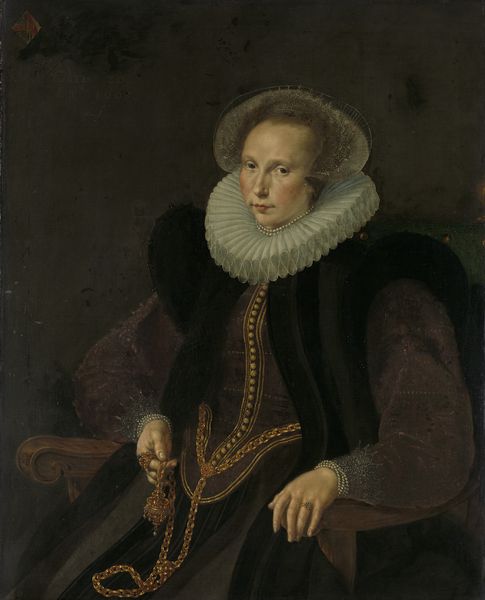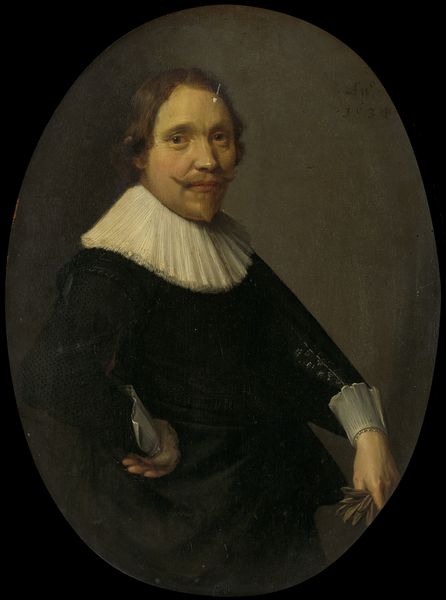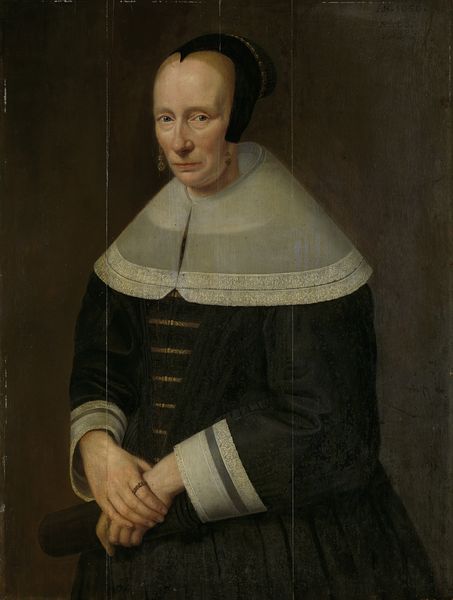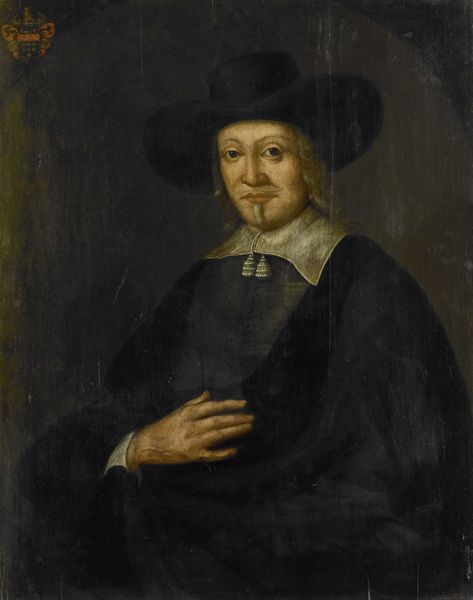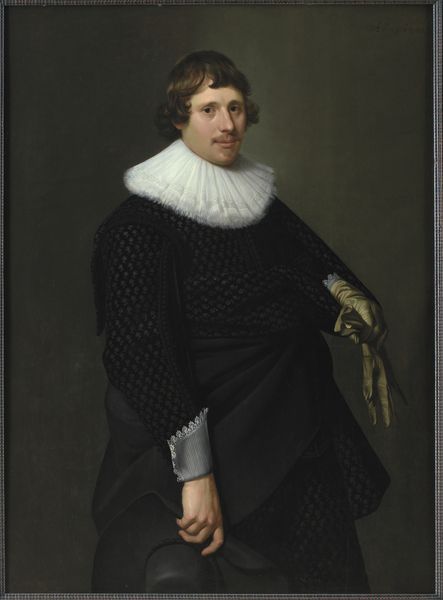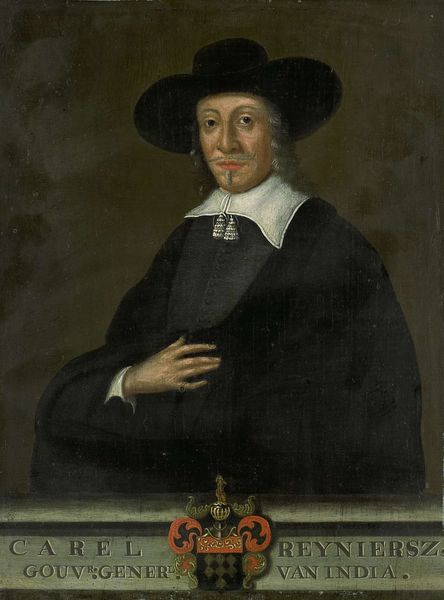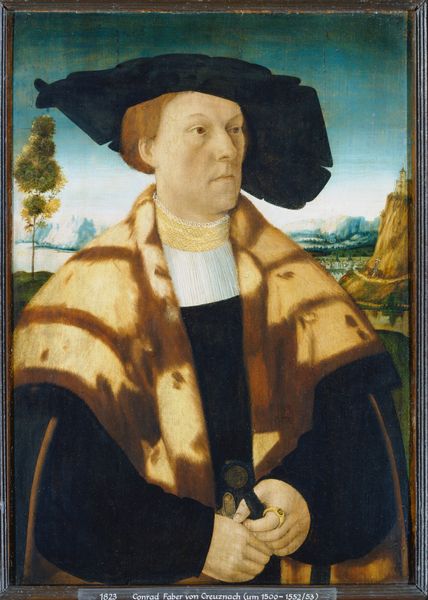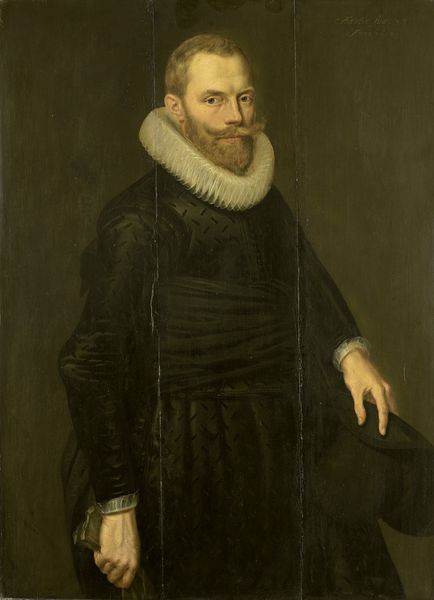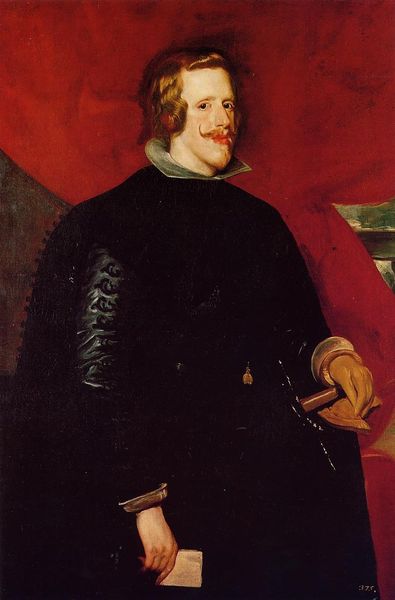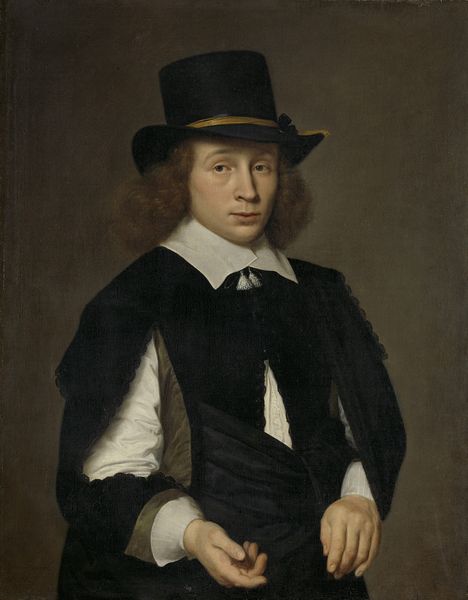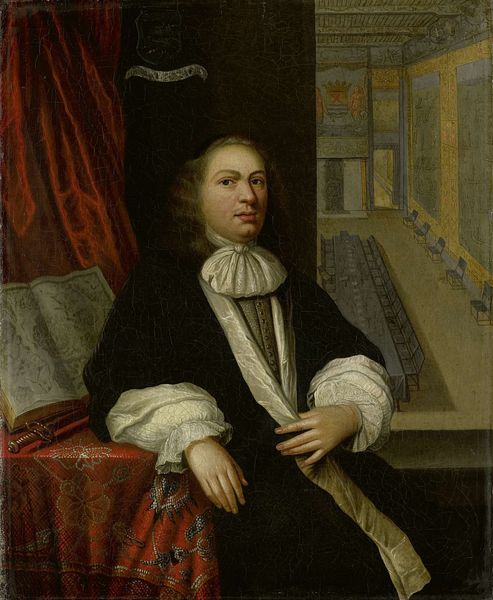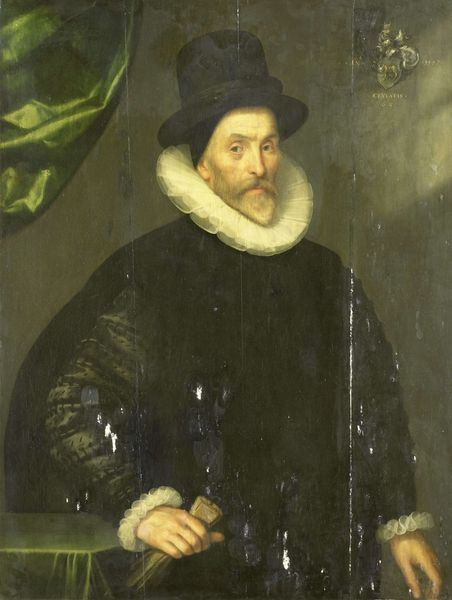
#
character portrait
#
portrait reference
#
portrait head and shoulder
#
animal drawing portrait
#
portrait drawing
#
facial portrait
#
portrait art
#
fine art portrait
#
celebrity portrait
#
digital portrait
Dimensions: support height 121.5 cm, support width 88.8 cm, outer size depth 7.5 cm
Copyright: Rijks Museum: Open Domain
Curator: Here we see a portrait identified as Gerrit Ottsz Hinlopen, rendered in 1631 by an anonymous artist. The painting now resides here at the Rijksmuseum. Editor: It's quite dark, isn’t it? I'm drawn to the intense black of his clothing—you can almost feel the weight and texture of the fabric despite the painting's age. The bright white ruff creates a striking contrast. Curator: The stark color difference surely was deliberate. The ruff and his skin frame his face and immediately direct the viewer's attention there, creating a focus on social standing, which was often signified through modes of dress and adornment. Editor: Definitely. Think about the social statement this garment makes, especially given the laborious process of bleaching linen to achieve such stark whiteness at that time. But look closer at the sleeves—the way they are painted almost gives a sense of inflation of the shape and form, suggesting maybe padding. I want to know how such volume and silhouette was made! Curator: Perhaps, yes, an artificiality is introduced. These fashionable garments also mask the physical presence of the man, emphasizing instead an idealized or prescribed presentation of self—he appears more robust than maybe he was, reinforcing notions of power and privilege. See the family crest in the upper right as further evidence of societal position and importance. Editor: The inclusion of that family crest certainly reinforces his elevated position. The painting also strikes me as an excellent example of how the consumption of material goods extends beyond the wearing of a fashionable garment. Portraiture like this itself represents another commodity that one would purchase. Curator: Quite so. To have your likeness captured for posterity, displayed for yourself and future generations to gaze upon. In the most immediate terms, it is meant for admiration. Editor: For sure, but more broadly, consider the layers of consumption represented. A laborer made the fabric, another tailored it. Yet another ground and mixed the pigments to portray it all in a representational fashion. There is also, most likely, an individual that delivered the material goods or dyes and fixatives for each item. Curator: These visual symbols have, indeed, complex production origins! Perhaps those processes explain its lingering presence. Editor: Exactly. We tend to remember most profoundly that which remains, even beyond use!
Comments
No comments
Be the first to comment and join the conversation on the ultimate creative platform.
